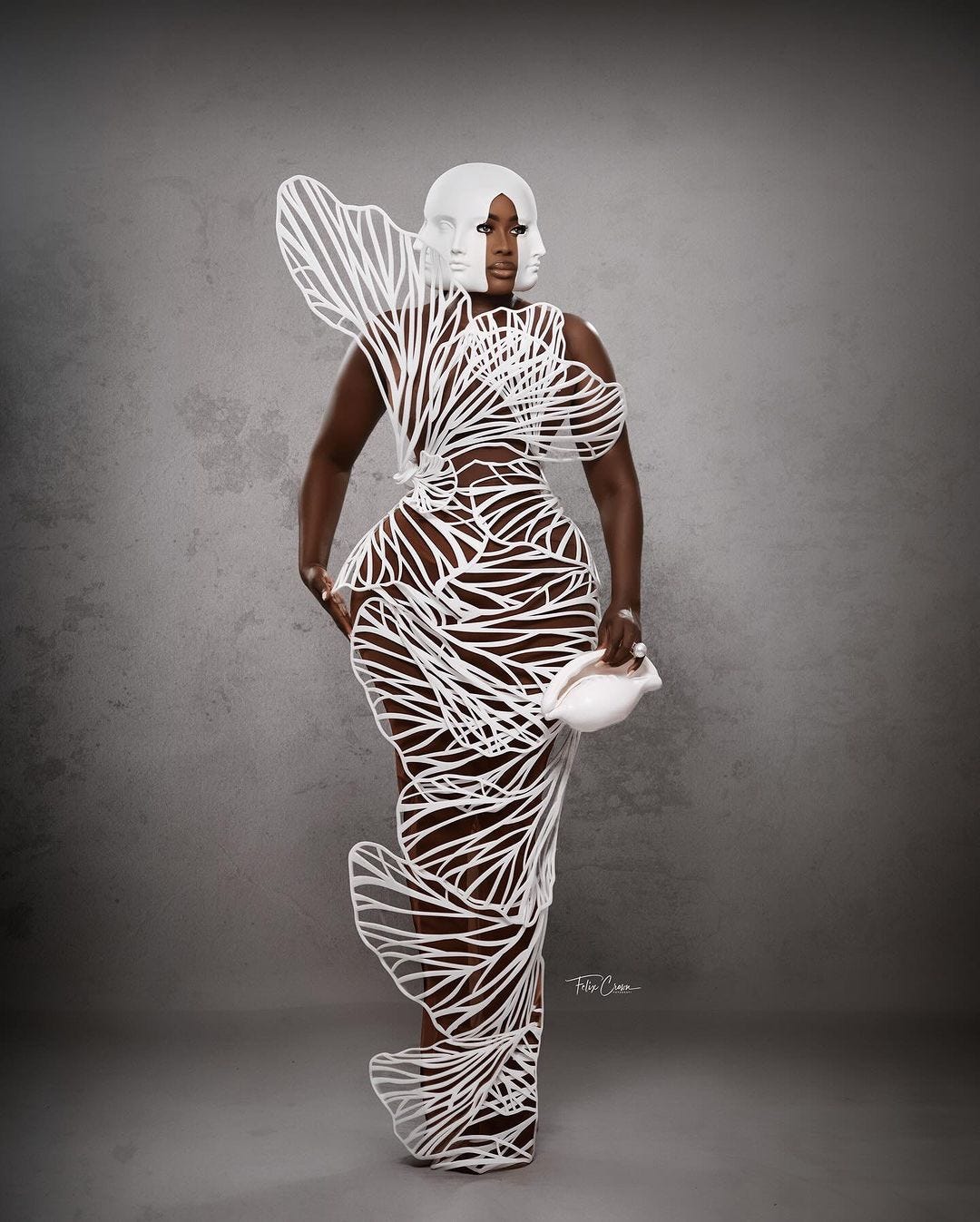The Future of technology in African Fashion
Decades ago, the idea of shopping on a tiny, magic rectangle that fits in the palm of your hand and can conjure up anything you desire would have appeared utterly unimaginable.
Decades ago, the idea of shopping on a tiny, magic rectangle that fits in the palm of your hand and can conjure up anything you desire, without ever having to leave your house or haggle with a salesperson, would have appeared utterly unimaginable.
But so much has changed over the years.
These days, people can earn a living and run entire businesses on the internet without a physical storefront.
Technology has brought incredible progress, making trade faster, easier, and removing geographic barriers.
These technological advancements have impacted the fashion industry in Africa too.
Remember when getting clothes tailored meant visiting the tailor's shop in person?
The tailor needed to show you style options from magazines, take your measurements, and you'd have to return to collect the finished garment.
Direct interaction with the tailor was essential.
Nowadays, thanks to technology, you can have clothes made perfectly to your measurements by a designer miles away.
With a few clicks, you can share your measurements, participate in a virtual fitting via scheduled video call, and get your clothes delivered to your doorsteps.
In the last decade, we’ve seen how innovative technologies have paved the way for the creation of new materials, revolutionised design processes, and reshaped the very fabric of garment production.
As someone who had an extensive career in IT, I know how technology can drive remarkable innovation and make even a year feel like a generation ago.
From the e-commerce platforms that dominated the 2010s, the 2020s have brought about an explosion in social commerce.
People are buying directly from vendors and creators who pop up on their social media feeds with Instagram grids now replacing catalogues.
We’ve also had more financial solution startups burst onto the scenes, your neo-banks and fintechs, who are on a mission to make payment across the continent a seamless experience.
Not to mention, the sharp rise of niched online market places, and not just multi-purpose ones that are exclusively serving a fashion-interested customer base.
At Pashione, we provide an accessible entry point for African fashion designers seeking to expand their reach globally.
For production, 3D printing has brought another element to the industry that has never been seen before.
I saw photos and videos from the Met Gala as well as the recently concluded Africa Magic Viewers' Choice Awards (AMVCA) and was pleased.
3D printing is enabling designers to create unique, sustainable pieces while minimising waste and experimenting with intricate designs.
Traditional fashion production can be quite wasteful, with tons of leftover fabric ending up in landfills.
But with 3D printing, designers can minimize waste by only using the materials they need to create their masterpieces.
And as someone who believes in environmental sustainability and impact, it warms my heart that we’re headed towards sustainable fashion.
Machine learning and Artificial Intelligence (AI) cannot also be left out. There is a tremendous use-case in the African fashion industry.
It is being used to analyse consumer preferences, predict trends, and optimise supply chains for African fashion brands.
I recently read about startups like Fitted who are working with tailors and designers across the continent to use machine learning to streamline custom tailoring processes.
All of these development are great for the continent .
As African fashion continues to thrive and gain global recognition, technology will undoubtedly continue driving its growth and innovation.
But that's just the tip of the iceberg.


